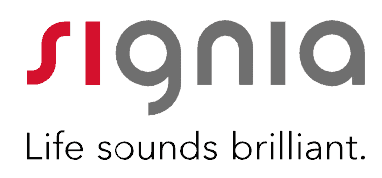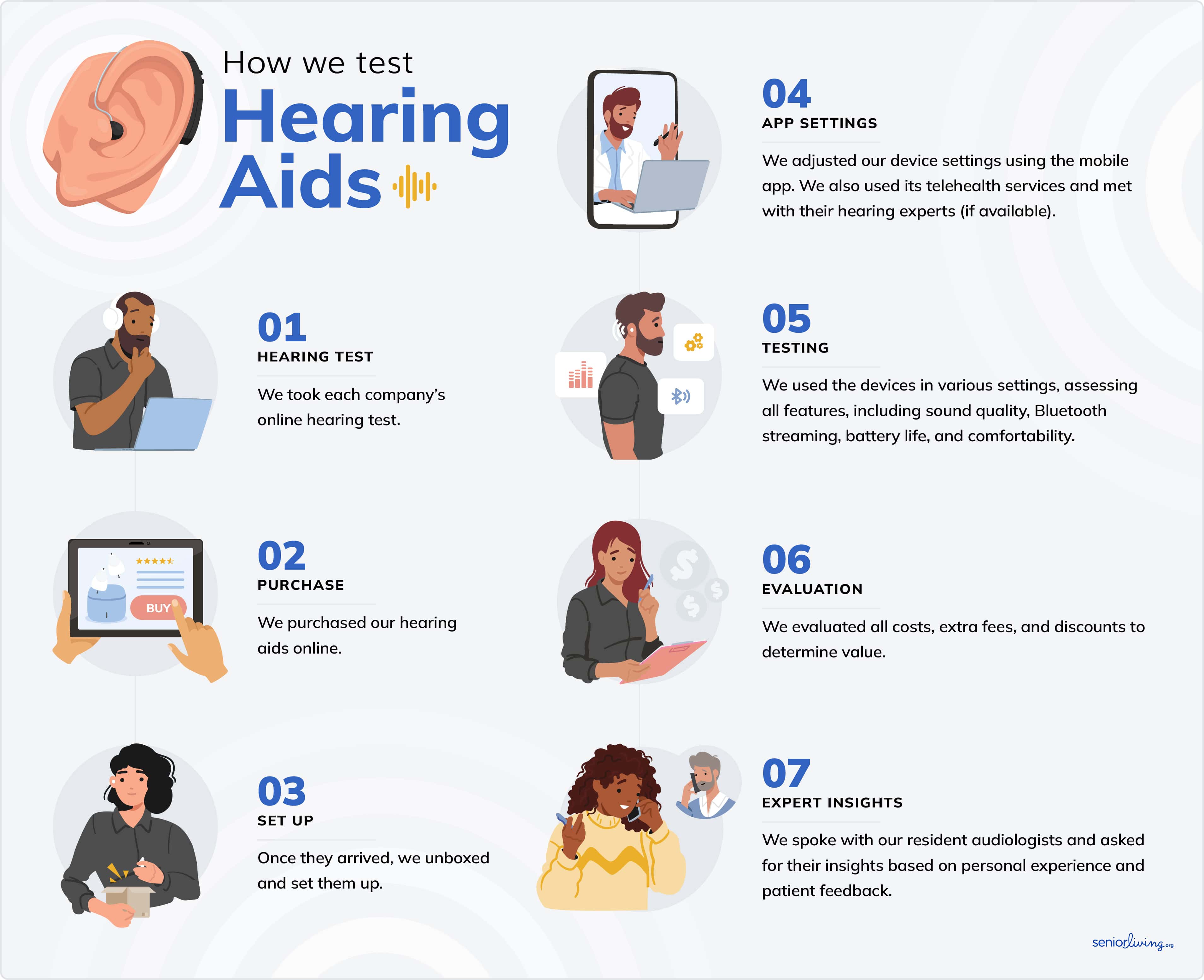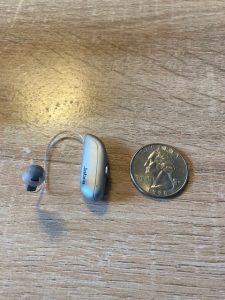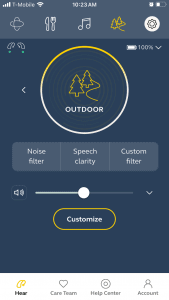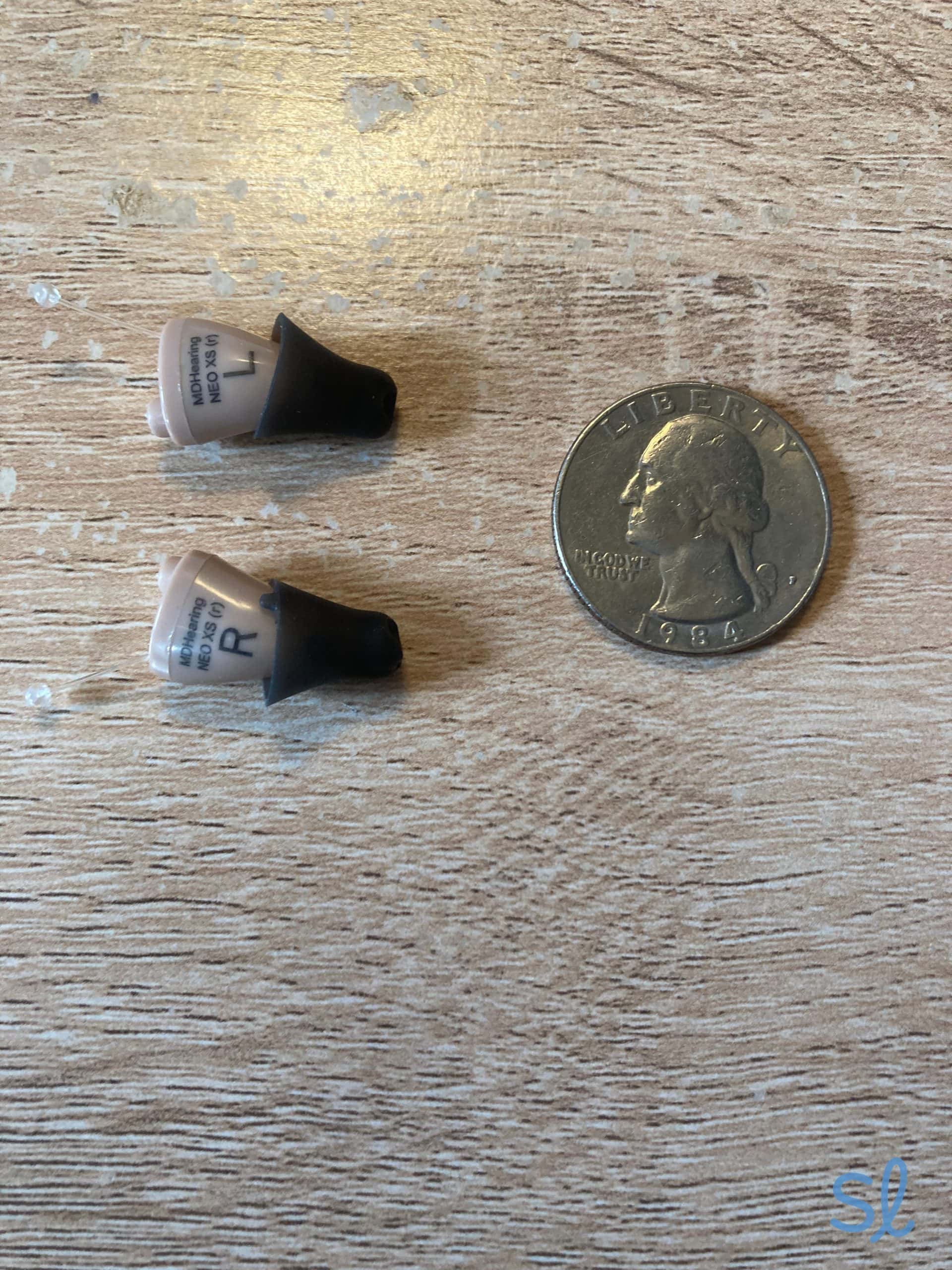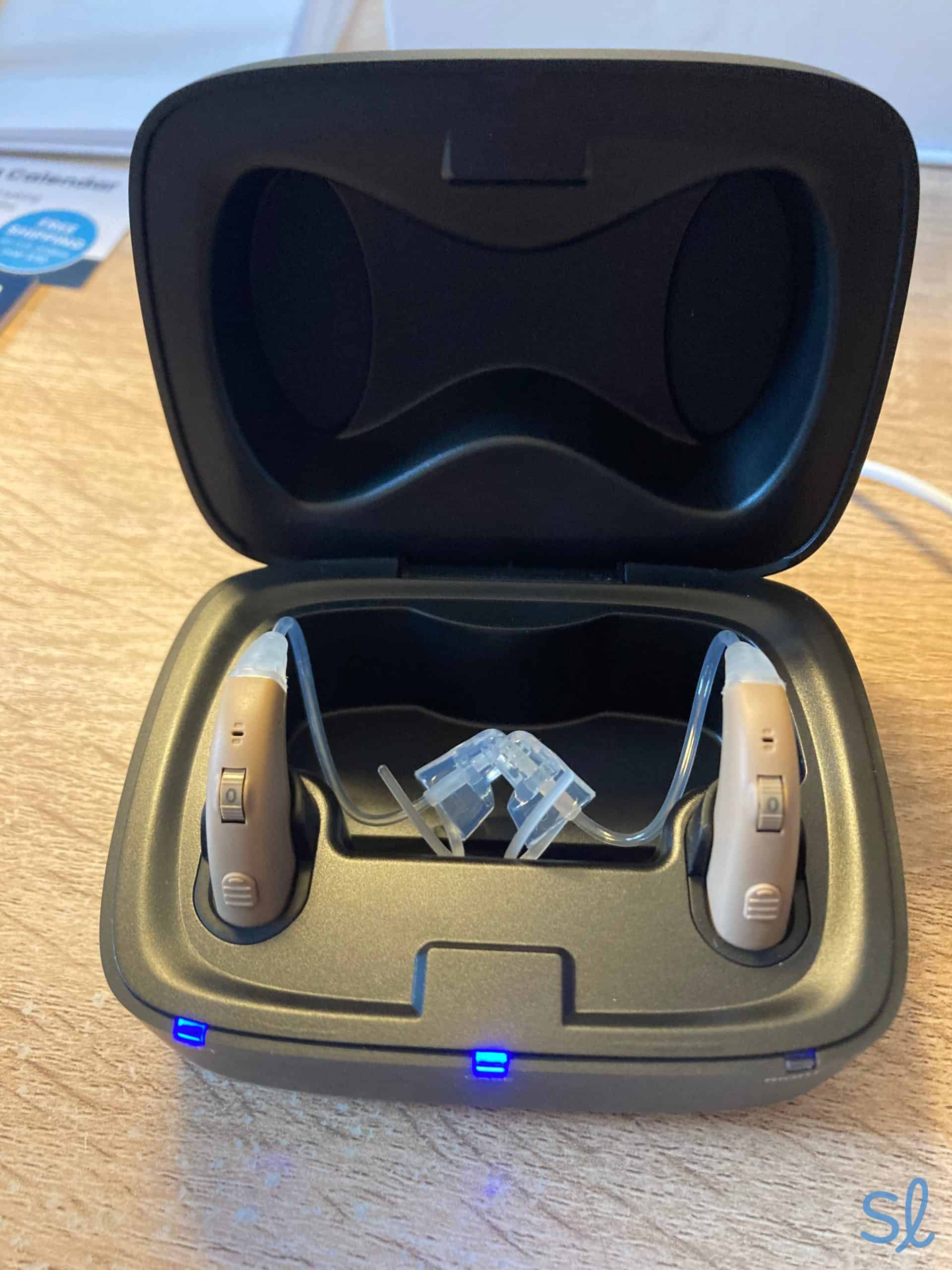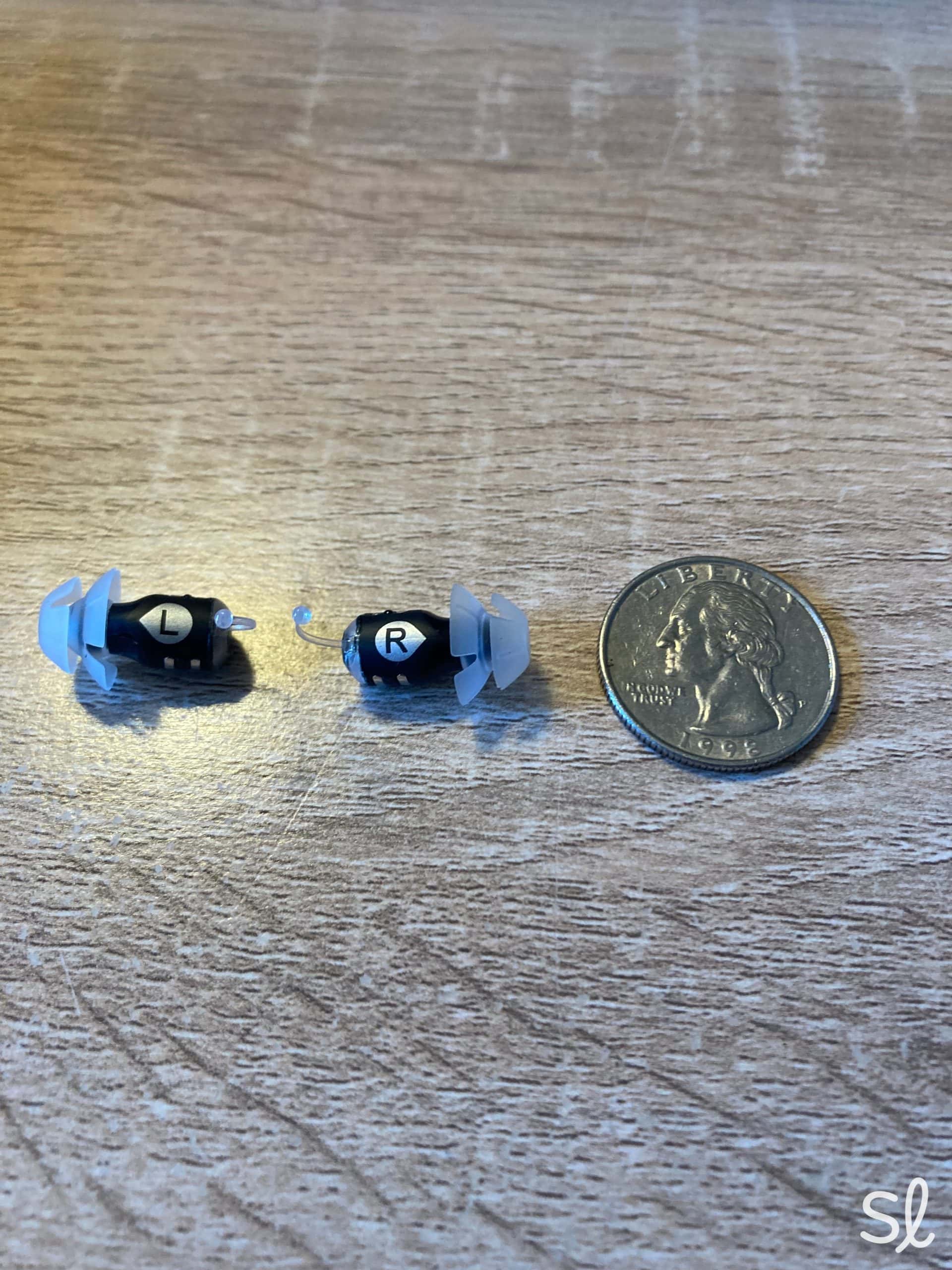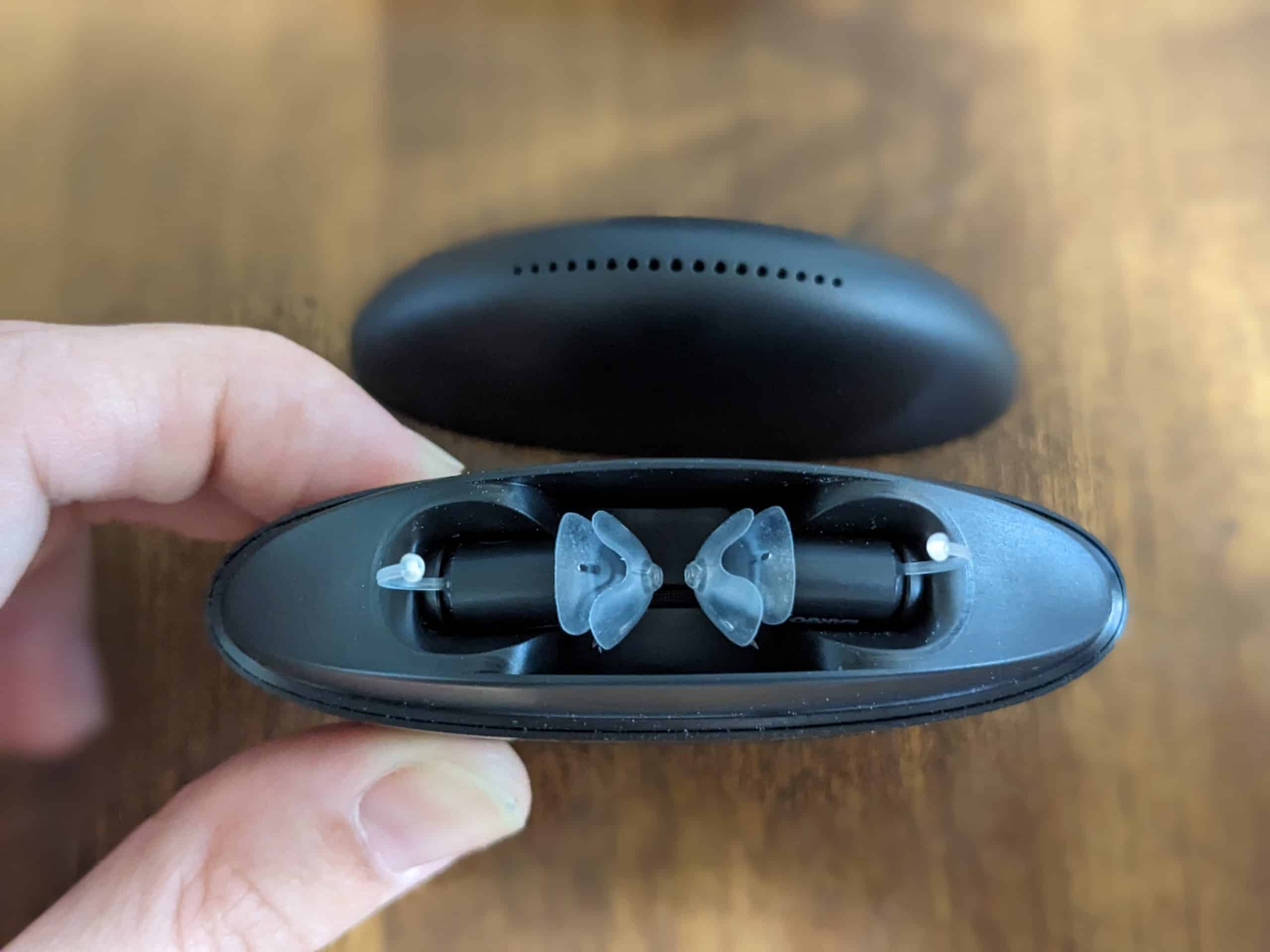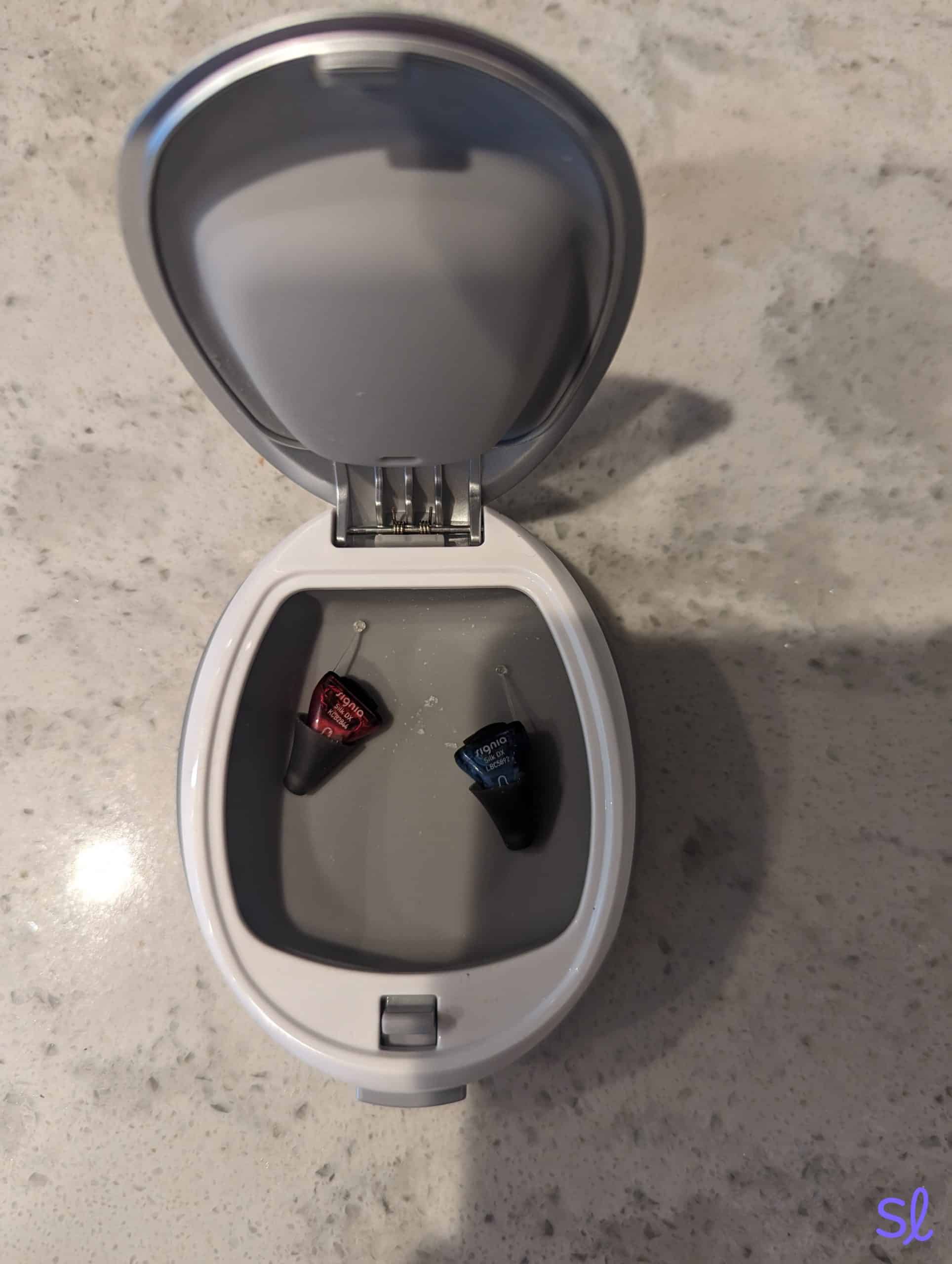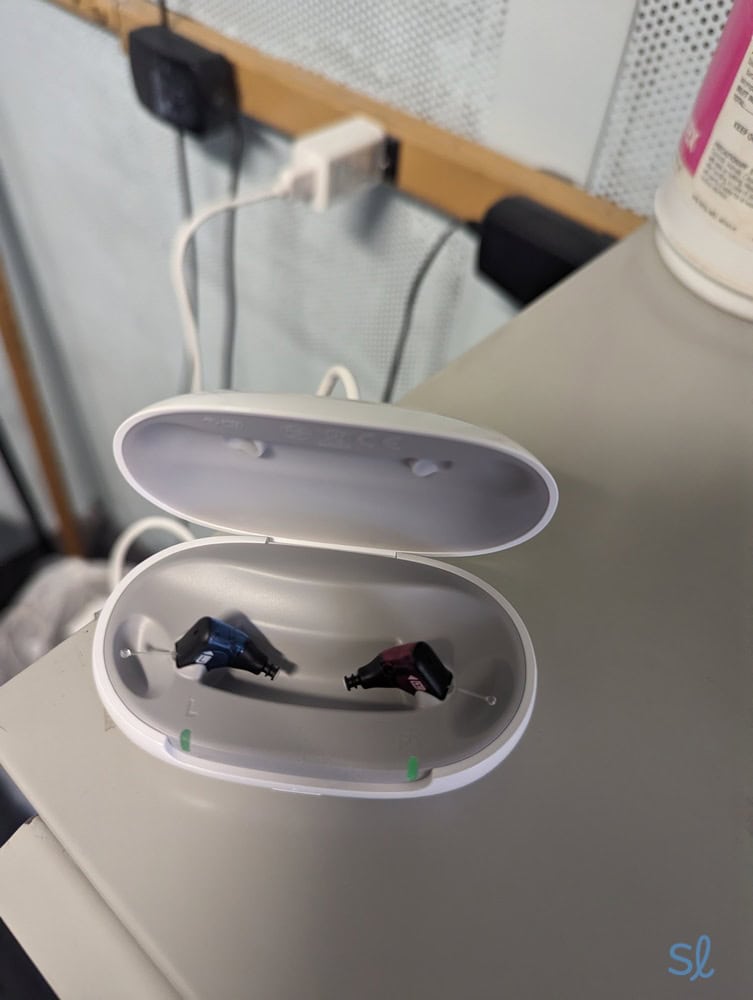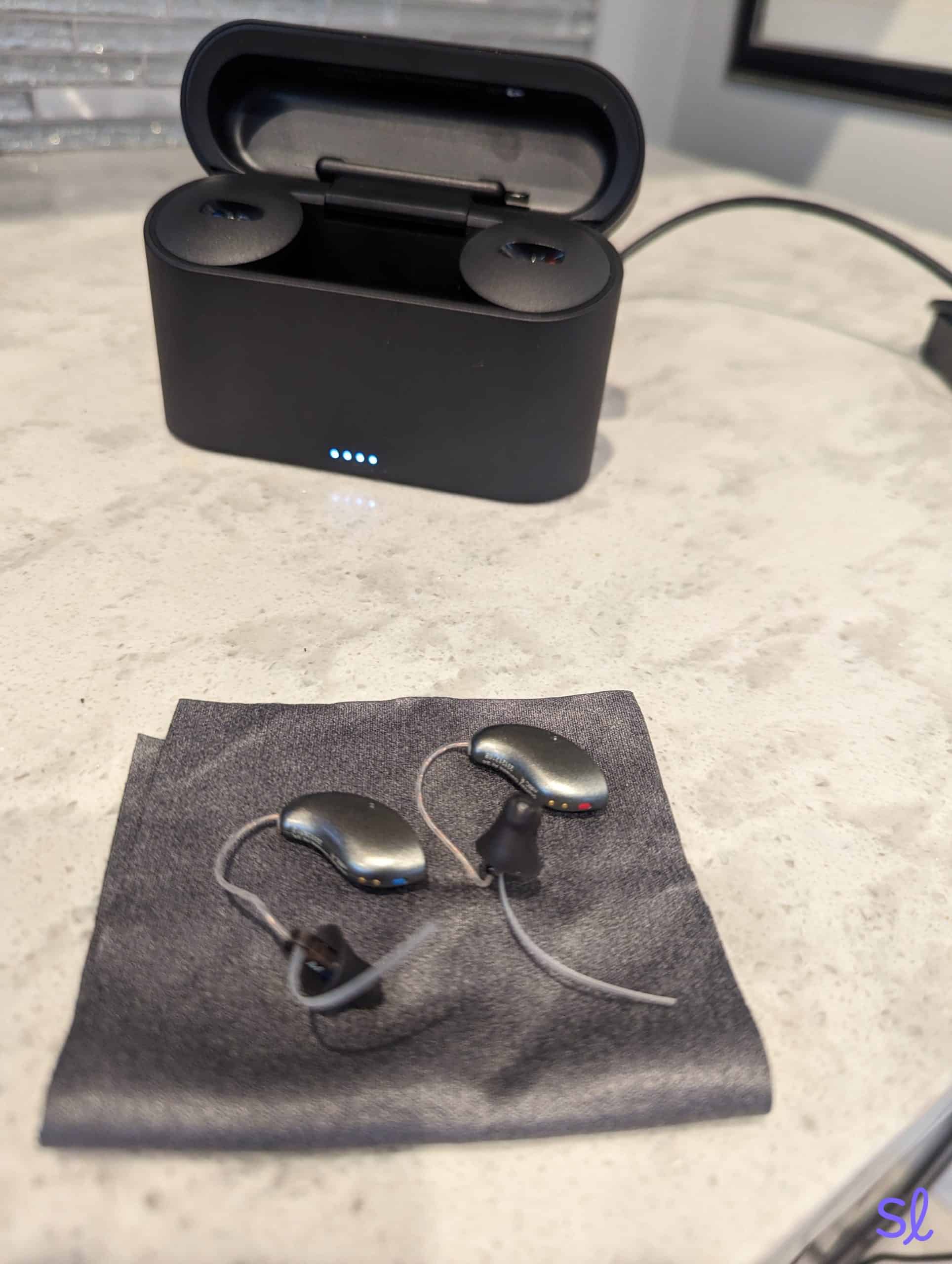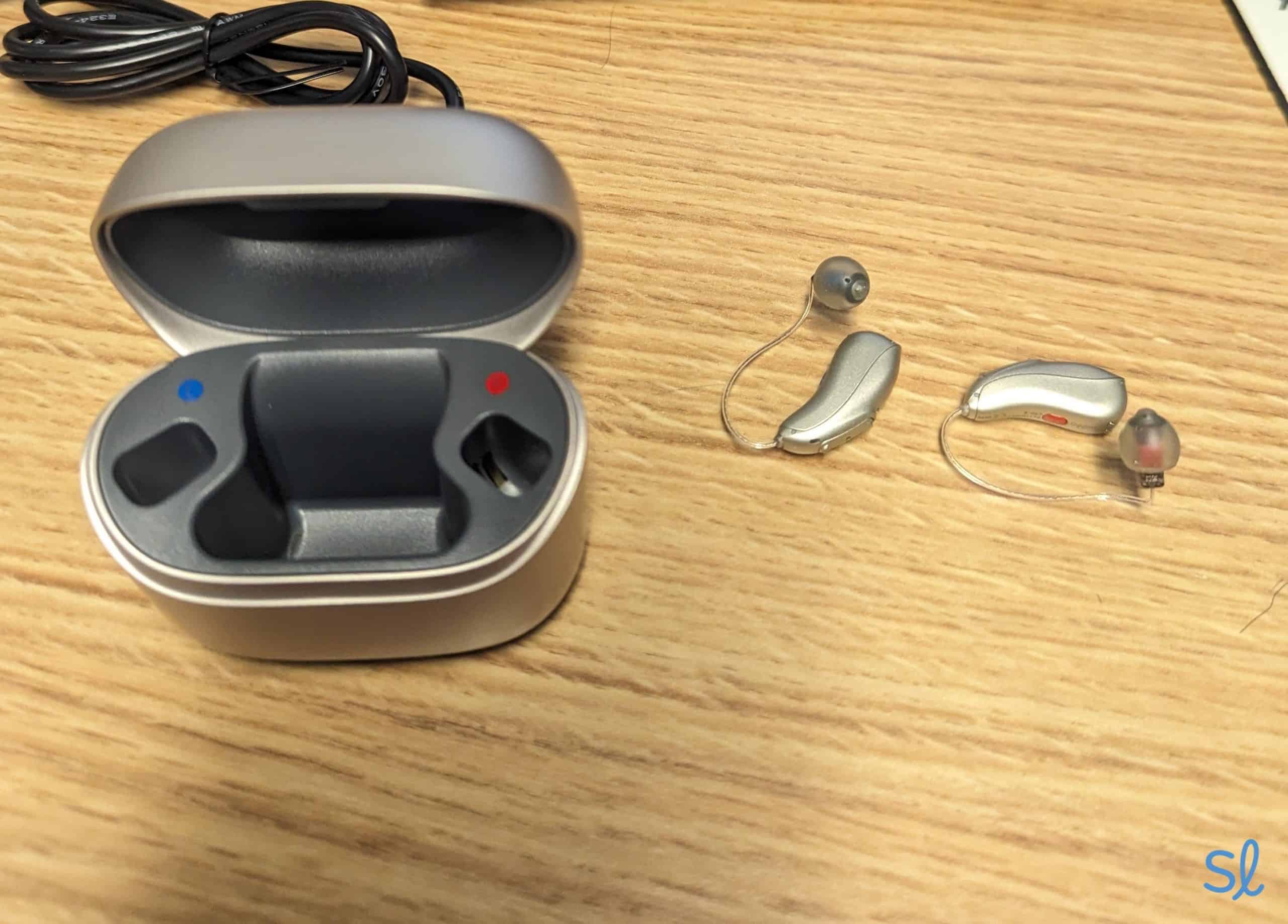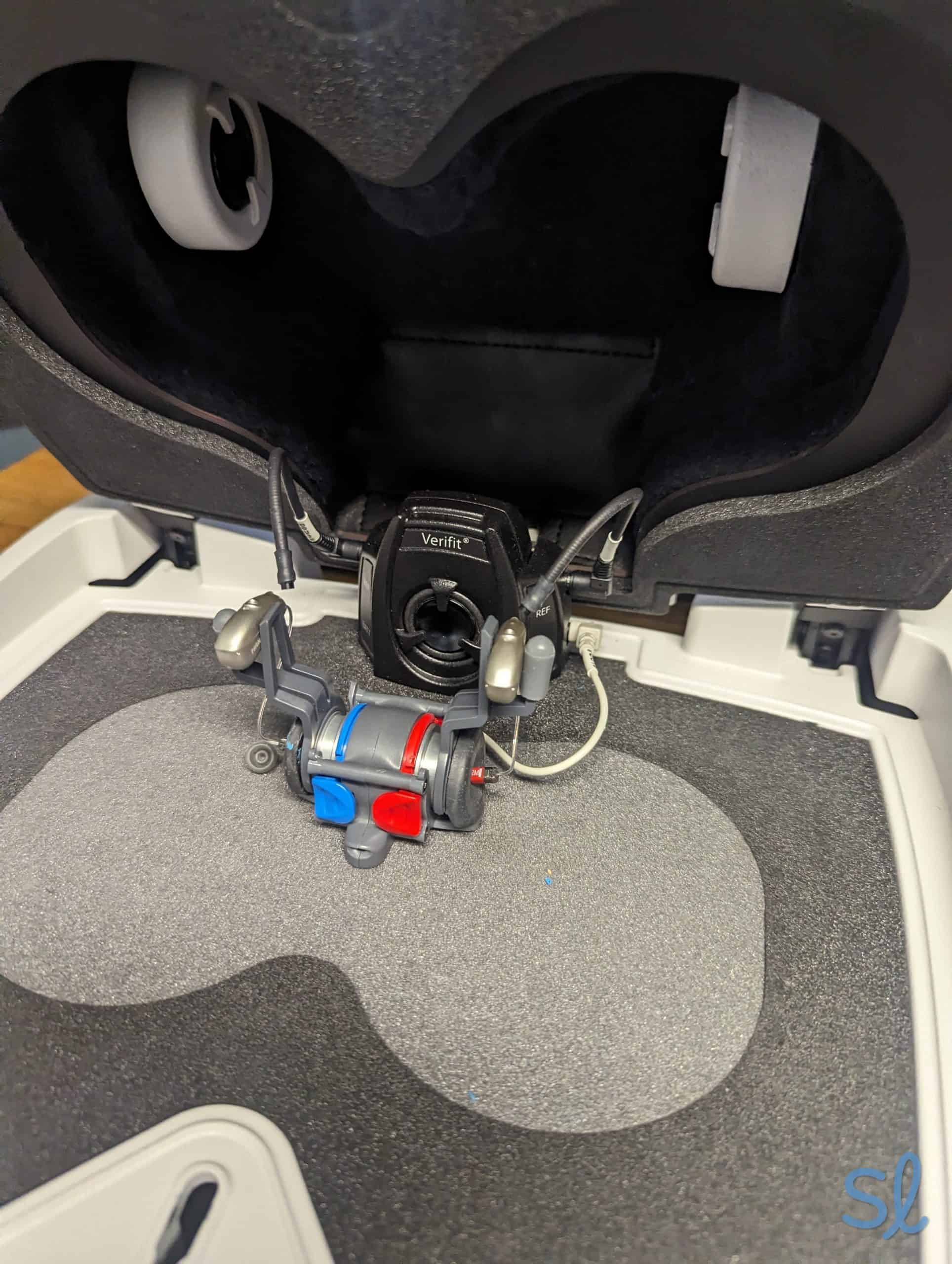Best Hearing Aids for Active Lifestyles, Tested and Reviewed by Audiologists
Our tech experts and audiologists chose Jabra Enhance as the best hearing aid for active seniors because of its Bluetooth streaming, follow-up care, and advanced features.
SeniorLiving.org is supported by commissions from providers listed on our site. Read our Editorial Guidelines
- Prices start at $995 per pair
- Three rechargeable BTE models
- Bluetooth streaming from iPhones and select Android devices
- Prices start at $297 per pair
- Three BTE models and three ITE models
- Available in singles and pairs
- Prices start at $799
- Two CIC models and one earbud-style model
- Remote app control with select models
- Notch Therapy (NT) for tonal tinnitus
- Excellent styles and aesthetic appeal
- In-ear and BTE models
- Options for mild to profound hearing loss
- Health and wellness features
- Advanced AI technology
- Solutions for mild to profound hearing loss
- Rich sound quality
- Industry-leading technology
SeniorLiving.org’s resident audiologists and senior tech experts tested the industry’s top hearing aids and narrowed the list to our picks for active lifestyles.
SeniorLiving.org’s resident audiologists and senior tech experts tested the industry’s top hearing aids and narrowed the list to our picks for active lifestyles.
Learn MoreContents
Hearing loss can make exercising and leading an active life more challenging. It may be tough to maintain a conversation with friends while walking. Staying aware of your surroundings when running or hiking could be difficult. Fortunately, hearing aids can support and enhance the active lifestyle you want. Many brands offer hearing aid models that make activities like biking, hiking, and walking around your neighborhood safer and more enjoyable. (We don’t recommend swimming, as even hearing aids advertised as “waterproof” are still susceptible to water damage.)
Our senior tech experts and resident audiologist, Dr. Ruth Reisman, have reviewed and tested the best hearing aids in 2025. We used our experience (and research) to narrow the list to our top picks for active lifestyles. Our team evaluated each hearing aid for critical features like streaming capabilities, battery life, price, and more. Based on our research and Dr. Reisman’s feedback, we chose Jabra Enhance as our top pick for their advanced Bluetooth streaming and connectivity, compatibility with a wide range of smartphones, and high-quality sound and features. Below, we’ll look at the best hearing aids for active lifestyles, as well as ways to care for your hearing aids properly, both during and after exercise.
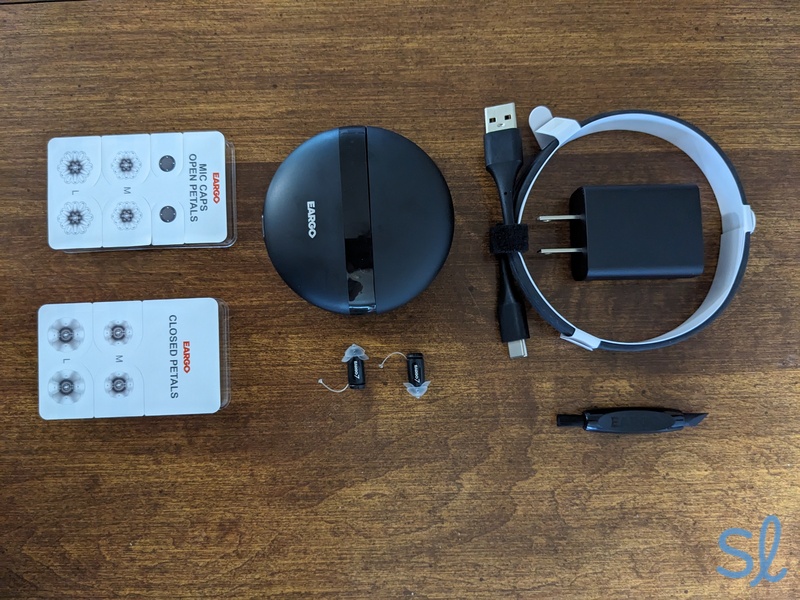
Our team has tested all of the hearing aids on our list, including the Eargo 7 pictured here.

Our Methodology: How We Tested and Chose the Best Hearing Aids for Active Lifestyles
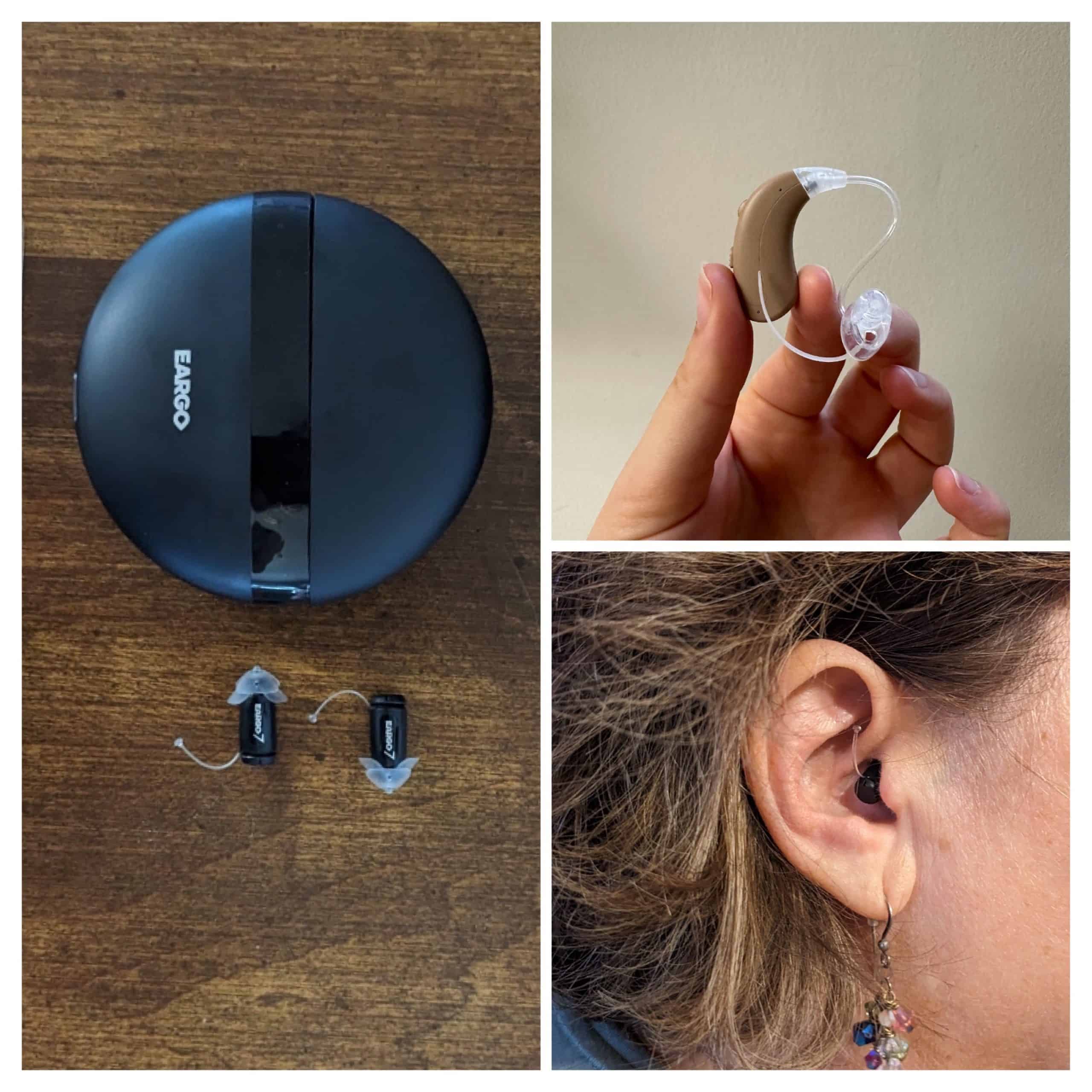
Our team testing out different hearing aids
How We Tested the Hearing Aids
Our tech team conducted over 100 hours of hands-on testing to compare the top hearing aid providers side by side. We focused on a wide range of factors that could impact the listening experience for physically active users.
Here’s what our testing process looked like for OTC hearing aids that could be ordered online:
- Our tech experts completed each brand’s online hearing test, comparing our results to in-person evaluations from an audiologist.
- Then, we selected our hearing aids and made our purchase, evaluating the overall purchasing process. We considered the price and value of each hearing aid model, considering promotions, extra fees, and upfront costs.
- Once the devices arrived at our doorstep, we followed the instructions to set them up. If the brand had a mobile app, we downloaded it to our phones and set it up, too. We evaluated the ease of use to get our hearing aids out of the box and fully functional.
- We contacted customer service several times to evaluate the quality of care by phone, mobile app, and online chat when available.
- Our team tested each hearing aid for a week, using them at home, in noisy environments, and in quieter settings. We evaluated the hearing aid’s features, sound quality, and ease of use in each environment. Additionally, we tested how well each hearing aid model stayed in place during more vigorous activities, how well it streamed audio from other devices, and how well it resisted moisture (like sweat).
For prescription hearing aids that can’t be ordered online, we spoke with Dr. Reisman about her expertise with each brand. We used her experience prescribing and testing these hearing aids, along with feedback from her patients, to evaluate and rank them.
How We Chose the Best Hearing Aids
If you enjoy staying active, it’s important to choose a hearing aid that can keep up. To help narrow down your choices, our tech team and resident audiologist, Dr. Ruth Reisman, compiled a list of the best hearing aids for an active lifestyle. Every hearing aid on our list was tested by our tech experts, prescribed and tested by Dr. Reisman, or both. We evaluated criteria like:
- Streaming capabilities: Many people who enjoy active lifestyles don’t want to leave the conveniences of modern tech behind just because they’re going for a jog or hitting the gym. Bluetooth makes it possible to enjoy hands-free calling, music, podcasts, and other audio streamed directly from your smartphone to your hearing aids. We tested each hearing aid’s streaming features to make calls and listen to other audio, evaluating the sound quality and ease of use.
- Battery life: Battery life can make or break your experience with hearing aids, especially if you tend to be active in the great outdoors. We tested hearing aids over a week, noting how long their batteries lasted before needing a charge. We selected hearing aids that last at least 16 hours on one charge.
- Price and value: Price is always important for seniors, regardless of how active they are. For this reason, our list includes hearing aids for virtually any budget. We considered starting prices, value for money, seasonal discounts, and any other ways to save.
- Sweat and water resistance: While most hearing aid models cannot be fully submerged underwater, many are moisture-resistant. You can sweat or enjoy water-based activities. We tested and compared each hearing aid’s water resistance during physical activity and in water.
- Ease of use: If you live an active lifestyle, you probably don’t want a lot of distractions when you’re “in the zone.” We gave high ratings to user-friendly devices capable of being adjusted as needed, even while the user is on the go.
Why Trust Us
Our senior tech experts try out the latest gadgets for older adults. We’ve spent hundreds of hours testing and reviewing hearing aids from many providers. We also work with experts like our resident audiologist, Dr. Ruth Reisman. She has personally tested and prescribed hearing aids from the providers on our list. She worked alongside us to choose the best hearing aids for seniors who like to exercise, travel, or just generally stay in motion. Dr. Reisman has been working with patients for over 15 years.
-
1. Jabra Enhance - Best streaming
 See Pricing Links to Jabra Enhance
See Pricing Links to Jabra EnhanceWhat we like most
- Prices start at $995 per pair
- Three rechargeable BTE models
- Bluetooth streaming from iPhones and select Android devices
 Jabra EnhanceSee Pricing Links to Jabra EnhanceOverview:
Jabra EnhanceSee Pricing Links to Jabra EnhanceOverview:Testing out Jabra Enhance Select 300 hearing aids
If music, podcasts, or audiobooks fuel your morning jog or gym workout, Jabra Enhance’s over-the-counter (OTC) hearing aids might suit you. The brand's three behind-the-ear (BTE) models offer direct Bluetooth streaming from iPhones and select Android devices. This means you can seamlessly transition from listening to music to answering a call.
Did You Know: According to the CDC, adults aged 65 and up need at least 150 minutes of moderate-intensity activity or 75 minutes of vigorous-intensity activity each week.1
The Enhance Select 500 and Enhance Select 300 feature hands-free calling for iPhones 11 and above. The Enhance Select 500 also offers hands-free streaming for select Android devices. This feature lets you hear the phone call through your hearing aid and respond using the device’s microphones. Since you don’t need to use your phone’s microphone, you’ll have both hands free for lifting, riding your bike, or driving.
Expert InsightsFrom Dr. Ruth Reisman, AudiologistJabra Enhance allows users to obtain virtual support at work or at home, which is great for those individuals with busy schedules.Pros & Cons:Pros About Jabra Enhance
- Bluetooth streaming with all models
- Hands-free calling option
- Portable charging case
- High-quality noise cancellation
- Three-year loss or damage protection and follow-up care with Premium packages
- Music mode improves quality of live music
Cons About Jabra Enhance
- Small product lineup
- No lifetime support
- Not for severe or profound hearing loss
Our Experience With Jabra Enhance:Whether working out, driving, or running errands, we had no trouble taking in our surroundings. When testing the Jabra Enhance Select 300 model, we got 30 hours of listening time per charge. Streaming audio directly reduced our listening time by a few hours. But it was easy to recharge our devices on the go with the portable battery case, which holds three additional charges. We could also quickly adjust our hearing aids in the mobile app when we enter different sound environments. For instance, we switched to the outdoor program while hiking and customized the settings for the best experience.
Making adjustments using the Jabra Enhance mobile app
Jabra Enhance only offers BTE models, which is a minor drawback. We found they weren’t as easy to wear with glasses or cycling helmets as in-ear models. However, the larger size of BTE hearing aids also allows for other great features like Bluetooth streaming, hands-free phone calls, and microphones that can actively adapt to different sound environments. If the larger BTE models are incompatible with the accessories you wear during physical activities, consider more discreet, in-ear models available from Eargo, plus prescription models from Signia, Phonak, and Starkey.
» Our Full Review Jabra Enhance hearing aids review 2025
Pricing
Jabra Enhance hearing aids cost $1,995 for the Enhance Select 500, $1,695 for the Enhance Select 300, and $1,195 for the Enhance Select 50R Premium package options. This brand offers superb value, given the excellent features Jabra Enhance offers, like Bluetooth streaming, noise cancellation, and follow-up care. You can even finance your hearing aids for as little as $39 per month.
» An In-Depth Review: Jabra Enhance Select 300 review
Every Premium package comes with a three-year warranty and three years of remote follow-up care with Jabra Enhance hearing specialists, adding to the value of these devices. If you want to save $200 on your purchase, you can opt for the Basic package, but this doesn’t come with the three-year warranty or three years of follow-up care. Dr. Reisman recommends the Premium package to get the best experience with your hearing aids. For lifetime follow-up care at no extra cost, consider OTC providers like Eargo or prescription providers like Starkey and ReSound.
-
2. MDHearing - Most affordable
 See Pricing Links to MDHearing
See Pricing Links to MDHearingWhat we like most
- Prices start at $297 per pair
- Three BTE models and three ITE models
- Available in singles and pairs
 MDHearingSee Pricing Links to MDHearingOverview:
MDHearingSee Pricing Links to MDHearingOverview:MDHearing's ITE hearing aids, including the NEO XS that we've tested, are small and discrete.
MDHearing is an OTC hearing aid manufacturer with three BTE and three in-the-ear (ITE) models. Both models are very affordable, even compared to our other top OTC picks — Jabra Enhance and Eargo. They’re also easy to use for seniors who may not be as tech-savvy, as no smartphone app is required. We could adjust the volume or select from four different sound settings on the hearing aid.
Did You Know: Curious about other affordable hearing aid options? Look at our list of the best cheap hearing aids for seniors.
MDHearing’s VOLT model helps you stay on the go for longer. It offers a 20-hour rechargeable battery and a portable charging case with three full charges. The battery life is about 10 hours shorter than higher-end models from Jabra Enhance, but it outperforms the listening time you can get on a single charge from the Eargo 7 by more than four hours. And if you’re looking for something a little more discreet (and less likely to interfere with glasses, goggles, or helmets), MDHearing offers the in-ear NEO, NEO XS, and NEO XS PRO models.
The MDHearing VOLT hearing aids are easy to charge, and a blue light indicates that they are charging.
Pros & Cons:Pros About MDHearing
- Affordable pricing
- BTE and ITE models
- Volume and setting control on the device
- Four rechargeable options
- Free U.S.-based lifetime support
- Available in singles and pairs
Cons About MDHearing
- No mobile app or Bluetooth streaming
- Not for severe-to-profound hearing loss
- Mild whistling sound during insertion
Our Experience With MDHearing:No matter which model of MDHearing hearing aids we tested, making on-the-go adjustments was a breeze. The hearing aids only feature an on/off dial and a program button. We quickly switched between programs by pressing the button and heard a certain number of beeps for each channel. While we appreciate this simplicity for less tech-savvy users, it may take some getting used to for those who struggle with smaller buttons. You also get free remote care from licensed hearing professionals. They can help you adjust your fit and settings and answer any questions.
» A Closer Look: MDHearing VOLT review
Our tech team tried out the VOLT and the NEO XS. While both provided a solid listening experience, the lack of a mobile app could be a drawback for those who prefer to make adjustments from their phones. We found the NEO XS wasn't quite as discreet as we hoped.
The Eargo 7 was less visible and easier to fit the first time. With the NEO XS, we needed to call customer support and change to smaller domes, which was a struggle. Making this adjustment could be difficult for those with arthritis or those with difficulty with fine motor skills. That said, the sound quality was crisp and clear, though we did hear some minor whistling when inserting the hearing aids for the first time.
» Our Full Review: MDHearing reviews in 2025
Pricing
MDHearing keeps prices low by selling directly to consumers online. Prices range from $297 to $597 per pair, as the company is constantly running sales to keep prices low. Even if you opt for one of MDHearing’s most expensive models, you’ll still be spending less than half the price of Eargo or Jabra Enhance hearing aids. However, MDHearing’s devices have fewer high-tech features, like a mobile app or direct streaming.
-
3. Eargo - Best to wear with a helmet
 See Pricing Links to Eargo
See Pricing Links to EargoWhat we like most
- Prices start at $799
- Two CIC models and one earbud-style model
- Remote app control with select models
 EargoSee Pricing Links to EargoOverview:
EargoSee Pricing Links to EargoOverview:Eargo SE hearing aids are small and fit in the canal, making them very discreet.
Whether you ride a motorcycle, bicycle, or horse, Eargo’s OTC hearing aids are worth considering. Eargo sells two completely-in-canal (CIC) models, letting you hear naturally and never interfering with helmets, hats, glasses, or masks. The company also has an earbud-style hearing aid, perfect for discretion.
» Compare Providers: MDHearing Aid vs. Eargo
The company’s premium model, the Eargo 7, is our pick for a comfortable fit and advanced noise reduction. The sound automatically adapts to your environment, which is fantastic for on-the-go seniors. Eargo 7 also features a water-resistance rating of IPX7, so you can wear them while boating, fishing, or lounging by the pool.
» Our Full Review: Eargo hearing aid review
Pros & Cons:Pros About Eargo
- Virtually invisible design
- Water-resistant models
- Comfortable fit
- Remote app control with select models
- Mimics natural hearing
- Lifetime remote support from hearing professionals
Cons About Eargo
- No Bluetooth streaming with most models
- Not for severe-to-profound hearing loss
- No BTE style available
Our Experience With Eargo:Eargo hearing aids fit inside the ear, staying out of sight and out of the way. Remember, this brand isn’t suitable if you have severe-to-profound hearing loss. However, there’s an upside. All the models are easy to use with headwear. That is a huge plus for seniors who want to engage in more adventurous activities, like climbing, skiing, kayaking, horseback riding, and cycling.
Quick Tip: Unsure which hearing aid is right for you? Check out our 2025 hearing aid buyer’s guide to learn everything you need to know to make an informed purchase.
During our testing, we found Eargo’s CIC models (Eargo SE and Eargo 7) took up to four hours to fully charge. While the charging cases could hold multiple charges, a single charge lasted a maximum of 16 hours. That may be sufficient for most active seniors, but it pales compared to Jabra Enhance, MDHearing, or the prescription hearing aids on our list. And for those who like to listen to music or take calls on the go, Eargo is not the best provider. The charging cases can connect to a mobile phone via Bluetooth, but the earbud-style LINK by Eargo is the only model with direct Bluetooth streaming to the hearing aid devices.
Charging our Eargo 7 hearing aids
Before purchasing, we’d recommend ordering a free “fit and feel” sample from Eargo. Eargo will ship you a nonworking pair of hearing aids, so you can see how they fit in your ears and decide if they’re comfortable. We appreciate this feature, as you can try before you buy. One of our testers has small ears, and she found the Eargo devices were uncomfortable for her ear shape, so a free sample was very useful.
Pricing
Eargo’s prices range from $799 to $2,699 per pair. Three-year financing is available for as little as $23 per month. Eargo may not be as affordable as MDHearing or Jabra Enhance, but they are still much cheaper than most prescription hearing aids from brands like Signia and Starkey. Eargo offers solid value for money in our book thanks to their useful mobile app, lifetime support, and discrete models.
-
4. Signia - Longest battery life
See Pricing Links to Zip HearingWhat we like most
- Notch Therapy (NT) for tonal tinnitus
- Excellent styles and aesthetic appeal
- In-ear and BTE models
SigniaSee Pricing Links to Zip HearingOverview:Trying out Signia's Silk hearing aids
Signia offers an impressive hearing prescription solution for active adults who enjoy backpacking, camping, and other overnight trips. The Signia Motion Charge&Go X works for up to 61 hours on a single charge. This means users can get away with not charging the hearing aids for a few days while they’re away from electricity and enjoying the great outdoors.
» Let’s Get Moving: The complete list of activities for seniors
Another perk for active users is the line’s acoustic motion sensors for automatic situation detection. Enjoy a more natural listening experience with enhanced speech understanding — even while moving.
» Our Full Review: Signia hearing aid reviews
Pros & Cons:Pros About Signia
- 60-plus hours of listening per charge with the Motion Charge&Go X
- Solutions for all levels of hearing loss
- Bluetooth streaming
- Power and super power models available
- Automatic situation detection and natural sound experience
- Portable charging case
- TeleCare access to your audiologist
Cons About Signia
- In-office visit required for purchase
- On the pricier side
Our Experience With Signia:For active seniors who need a reliable hearing aid, we’re big fans of the long-lasting battery in the Motion Charge&Go X line. The Signia Silk Charge&GO IX doesn’t have a long battery life, but it is a CIC alternative that won’t interfere with glasses or other headwear. Plus, it gives users 24 hours of listening on a single charge. You can go about your favorite activities knowing your hearing aids will last with Signia.
Testing out a pair of Signia Silk Charge&GO IX hearing aids.
Signia is one of Dr. Reisman’s favorite hearing aid brands for their innovative styles, tools for combating tinnitus, and ability to control hearing aid microphones. She highly recommends the Signia Silk Charge&Go IX because it is “a highly successful, instant fit invisible-in-the-canal device, with all the features of an advanced hearing aid that is now rechargeable. Patients love this device because of the cosmetic appeal and the sound quality.”
One of Dr. Reisman's patients wearing Signia Styletto hearing aids
Pricing
Signia hearing aids must be purchased from a hearing specialist or audiologist. Pricing varies depending on the model you select and where you purchase them. Dr. Reisman estimates a single hearing aid from Signia will range from $1,000 to $3,750. That is comparable to Phonak and Starkey prices.
Expert InsightsFrom Dr. Ruth Reisman, AudiologistSignia has great compact chargers for their devices for patients who are always on the go.Signia and most other prescription hearing aids typically cost at least twice as much as hearing aids from OTC providers like Jabra Enhance, Eargo, and MDHearing. However, these prescription hearing aids offer advanced features that OTC options don’t. They’re programmed by a hearing professional to fit your exact hearing loss.
-
5. Starkey - Best travel and wellness features
See Pricing Links to Zip HearingWhat we like most
- Options for mild to profound hearing loss
- Health and wellness features
- Advanced AI technology
StarkeySee Pricing Links to Zip HearingOverview:Testing out Starkey Genesis hearing aids
Starkey’s prescription hearing aids make hearing, traveling, and staying fit easier. The Starkey Genesis AI hearing aids let you hear speech comfortably and pair with the Starkey Thrive Hearing Control app for advanced functions. These hearing aids can track your daily steps, the amount of time you spend standing, and your physical activity. Plus, built-in fall detection helps keep you safe.
Did You Know? Do you or a loved one struggle with mobility? Check out the best medical alert systems with fall detection.
Starkey’s translation feature can make communicating with others at home or while traveling easier. When someone speaks into your phone, the app will translate their speech on your phone’s screen and play the translated text into your hearing aids. The technology can translate 27 languages in close to real time!
Pros & Cons:Pros About Starkey
- App with audio reminders, translation, and activity tracking
- Built-in fall detection alerts
- Multiple hearing aid styles available
- Mask Mode boosts speech
- Bluetooth streaming for select devices
- Remote adjustments via video chat
Cons About Starkey
- In-office appointment required for purchasing
- One of the most expensive options on the market
- May be too advanced for some users
Our Experience With Starkey:Starkey’s hearing aids are unlike any other. With the Starkey Genesis AI technology and Thrive app, active adults can more safely exercise, travel, and run errands. You can even have the app send reminders, like medication alerts, directly to your hearing aids. Plus, you can request remote visits via video chat, a major bonus when traveling. The Genesis AI line is available in several unique styles, allowing you to choose the best model for your hearing and comfort level.
» Our Full Review: Starkey hearing aids: reviewed and tested by an audiologist
Dr. Reisman notes that “In addition to superior sound quality, the health features on [the Starkey Genesis AI] are not available in any other hearing device. The future of their fall prevention feature will assist in balance rehabilitation for individuals with peripheral vestibular disorders. Patients notice an immediate improvement in sound quality when trying these devices, including those patients wearing devices from other manufacturers.”
Expert InsightsFrom Dr. Ruth Reisman, AudiologistStarkey offers waterproof devices that can combat issues associated with perspiration.Pricing
Starkey hearing aids vary in price, depending on where you purchase them. Exact costs aren’t available online, but Dr. Reisman estimates you can spend between $1,000 and $4,000 per hearing aid. That makes Starkey one of the most expensive brands available, even for prescription hearing aids. This company’s industry-leading technology and wellness features, like fall detection, justify the high cost. Dr. Reisman doesn’t call the Starkey Genesis AI “the Rolls Royce of hearing aids” without reason!
-
6. Phonak - Best fit for exercising
See Pricing Links to Zip HearingWhat we like most
- Solutions for mild to profound hearing loss
- Rich sound quality
- Industry-leading technology
PhonakSee Pricing Links to Zip HearingOverview:Phonak offers a variety of hearing aids for all levels of hearing loss.
Phonak offers a unique hearing model designed to support your active lifestyle. Whether fishing, golfing, rock climbing, running, or doing yoga, you don’t need to worry about Phonak’s Lyric hearing aid falling out. This hearing aid is placed deep in your ear canal by a Certified Lyric Provider, and it stays in 24/7 for months. Yes, you can even wear it while sleeping, showering, or doing water-related activities where your head is not submerged.
» Compare Providers: Phonak vs. Starkey
Other hearing aid styles (like BTE) are more susceptible to falling out of your ears or coming loose during movement. That’s not the case with Lyric. Instead, you can hear more naturally while you travel, exercise, and play sports. Plus, you can continue to use your phone, hearing protection, and over-the-ear headphones like you would if you didn’t have hearing aids at all. If Lyric isn’t the right fit for you, Phonak has several other high-tech solutions for all levels of hearing loss to suit your needs.
FYI: Roughly five percent of adults with diminished hearing have severe or profound hearing loss that requires prescription hearing aids from providers like Phonak or Signia.
Pros & Cons:Pros About Phonak
- Secure, snug fit
- Completely invisible solutions
- Wear the Lyric 24/7, including while playing sports, showering, and sleeping
- Water-resistant design
- Comfortable to wear with hats and helmets
- Solutions for all levels of hearing loss
Cons About Phonak
- On the pricier side
- Lyric must be replaced by your provider after removal
- In-office appointment required for purchase
Our Experience With Phonak:Although Lyric is a solid choice for sports, exercising, and water activities like boating or fishing, it isn’t suitable for swimming. Lyric cannot be submerged underwater. If you want a rechargeable, fully waterproof hearing aid, Phonak offers the Audéo Life BTE model. However, it doesn’t have Lyric’s fit or “set it and forget it” design. It’s important to remember that if you remove the Lyric device to go swimming, you must visit your hearing care specialist to have a new pair inserted. Thus, a removable pair like Audéo Life or alternatives from Signia or Starkey would work better for active seniors who enjoy swimming.
» Our Full Review: Phonak hearing aid reviews
According to Dr. Reisman, Phonak offers some of the best solutions for severe to profound hearing loss available. Their devices are often the only solution for patients with these higher levels of hearing loss. Similar to other prescription hearing aids, Dr. Reisman fine-tunes these hearing aids and custom programs them for her patients’ unique hearing needs.
Dr. Reisman uses Verifit equipment to test Phonak hearing aids and ensure the best experience for her patients.
Pricing
Pricing for Phonak’s hearing aids varies, depending on where you live and your provider. However, expect to pay more than you would for OTC hearing aids. Dr. Reisman estimates these prescription hearing aids cost anywhere from $1,000 to $3,750 per device.
Unlike Phonak’s other models, the Lyric is sold on a subscription model since the hearing aids need replacing every few months. Your subscription covers replacement hearing aids and the cost of your appointments for a set period, typically starting at one year.
Learn More: Phonak and Signia are two well-known names in the hearing aid biz. See how the two stack up in our Phonak vs. Signia comparison.
The Runners-Up
Looking for inexpensive hearing aids? The OTC providers below didn’t make the cut for our best list, but they may be a good fit for some active users with mild to moderate hearing loss.
- Lexie: Lexie’s Lumen is a simple battery-powered BTE Bluetooth hearing aid that’s excellent for active users. You can control these devices with an app on your smartphone or tablet; the Lumen features sweat-proof nano-coating technology to extend the life of the devices. See what else we love about Lexie in our Lexie hearing aid review.
- Otofonix: Otofonix provides virtual support before and after you become a customer. To see what else Otofonix has to offer, read our latest Otofonix hearing aid review.
Tips for Wearing Hearing Aids During and After Exercise From an Audiologist
Wearing hearing aids while exercising makes working out safer and more enjoyable. You can more easily hear your surroundings, directions from your exercise instructor, and conversations. Plus, if you get a pair with Bluetooth streaming, you can listen to music while you exercise.
» Also Check Out: How to put in hearing aids
Just be sure to follow some precautions to keep your hearing aids in tip-top shape before and after exercising.
Don’t wear hearing aids while swimming
Many modern hearing aids are water-resistant, but very few are waterproof. Do not wear hearing aids while swimming or any activity that involves fully submerging your head. It’s also a good idea to wear earplugs when swimming to keep water out of your ears. That way, when you put your hearing aids in after a swim, your ears are dry.
Be smart about how you dress
If you wear BTE or RIC hearing aids, certain clothes may interfere with your hearing aids. Hats, helmets, hooded sweatshirts or shirts, sunglasses, and other forms of eye protection can potentially displace your hearing aids as you exercise. Take extra care as you put on or remove these items or articles of clothing.
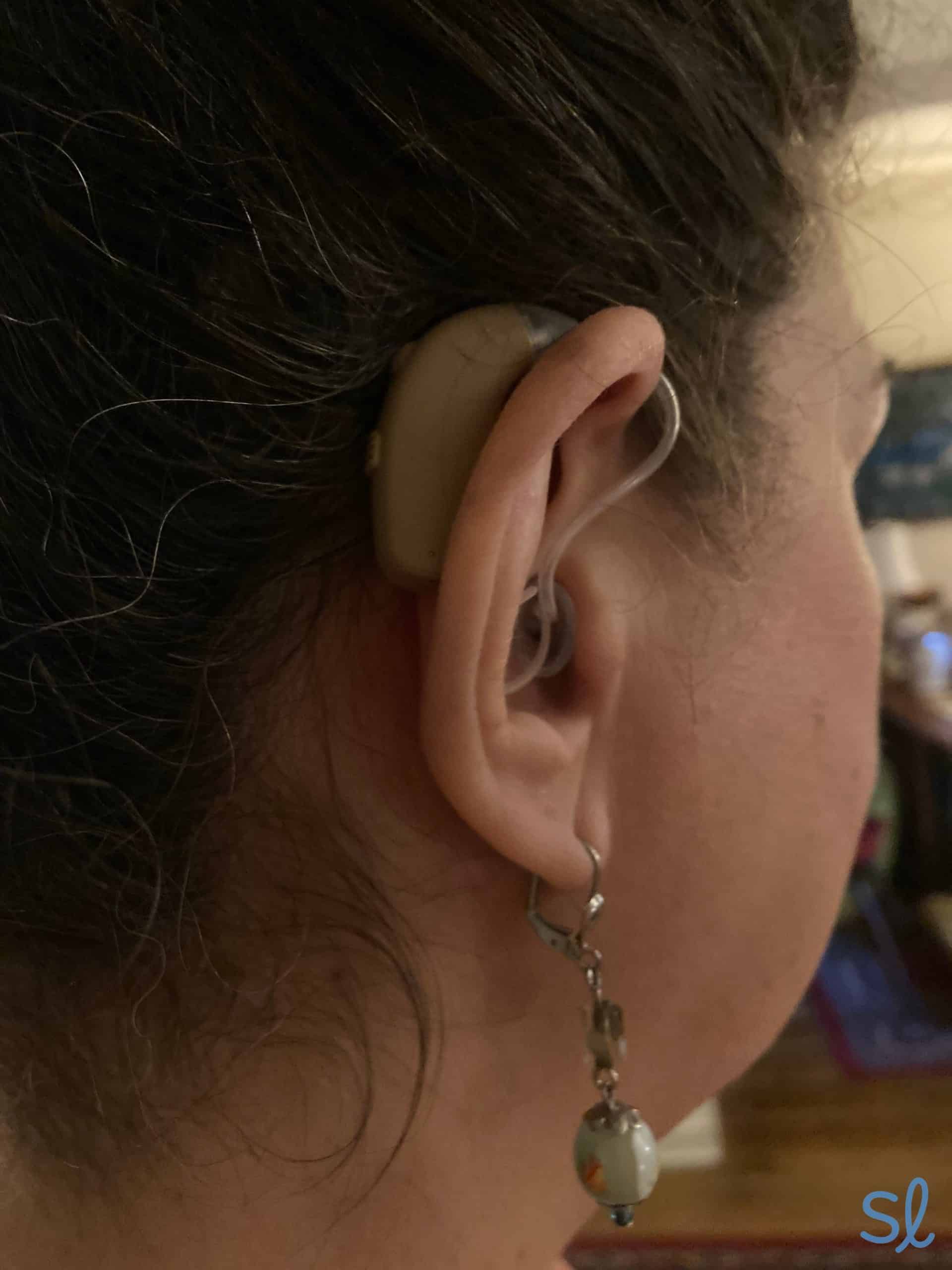
BTE hearing aids, like MDHearing's VOLT, may get in the way of certain types of exercise.
Use hearing aid accessories
Consider using hearing aid accessories to keep your hearing aids protected as you exercise.
- Hearing aid clips: These clips attach to your clothing and your hearing aids. So, if your hearing aids get knocked out during a contact sport or when running, they won’t fall to the ground.
- Sweat socks: Also called sweat sleeves or sweat-resistant pouches, sweat socks fit around the case of your BTE hearing aid. They block moisture and sweat from entering the circuitry.
Clean and dry your hearing aids after exercise
After each workout, it’s important to clean and dry your hearing aids. Your particular hearing aid model should come with specific cleaning instructions. Be sure to follow these or ask your hearing aid provider for tips.
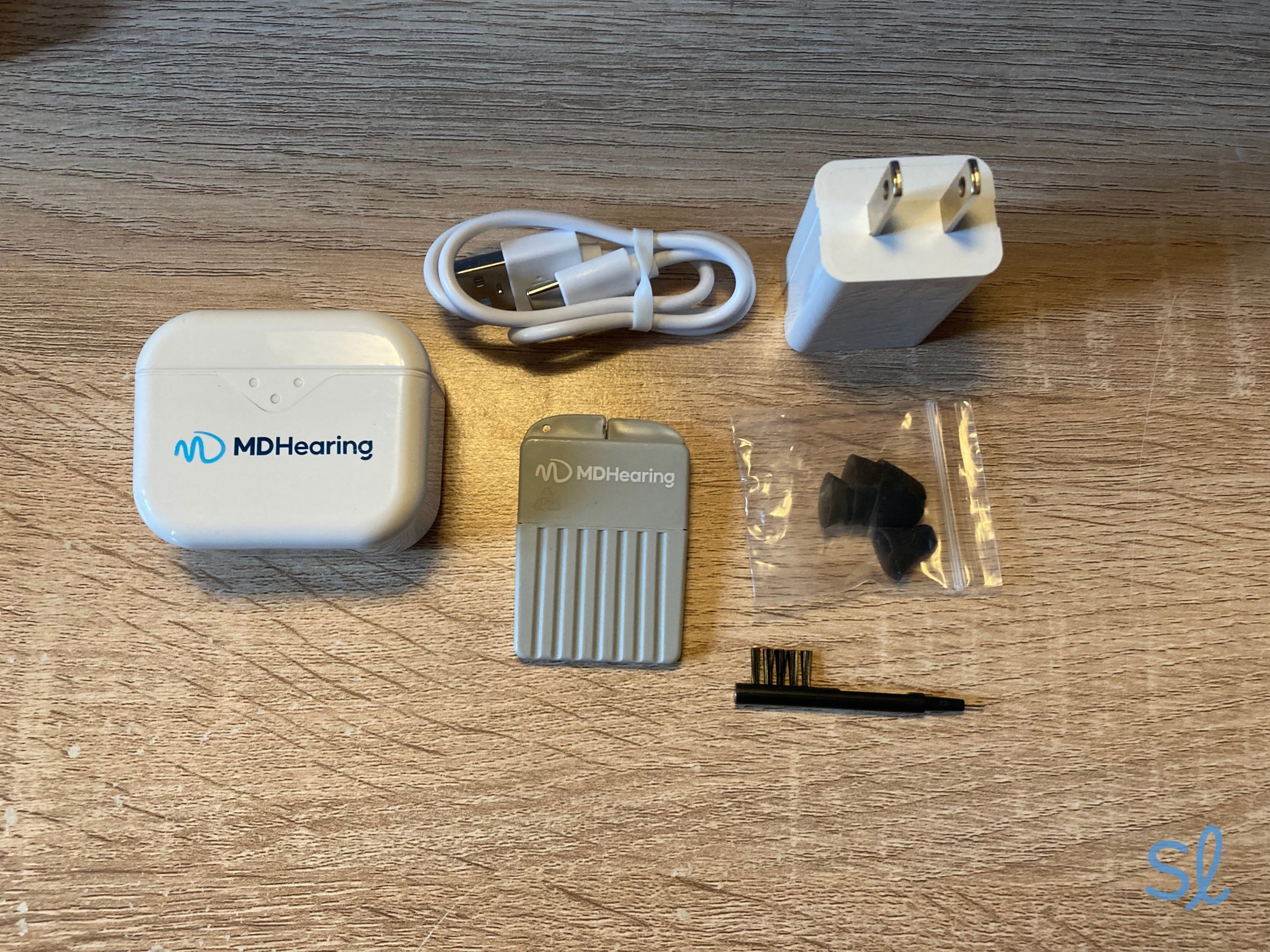
Hearing aids typically come with cleaning tools, as seen in our NEO XS package from MDHearing.
In general, you can use a clean, dry cloth and/or a dry box to remove moisture. Hearing aids can sit in a dry box or dehumidifier for as little as 45 minutes or overnight. You should sanitize your hearing aids and remove any dirt and wax. Finally, it’s helpful to shower before putting your hearing aids back in to wash the sweat from your hair and ears.
Dr. Reimsan offers her additional helpful tips, including:
- Select a high-activity model: Opt for hearing aids designed for active lifestyles. Some models are more resistant to moisture and sweat.
- Use sweatbands or covers: Wearing a sweatband can help absorb moisture before it reaches your hearing aids. There are also specialized hearing aid covers available that can provide additional protection against sweat.
- Keep hearing aids dry: After exercising, gently wipe your hearing aids with a soft, dry cloth. Avoid using any cleaning solutions or submerging them in water.
- Drying kits: Invest in a hearing aid drying kit or dehumidifier. These devices can help remove moisture that might accumulate in your hearing aids.
- Regular maintenance: Check and replace the hearing aid filters and batteries regularly. Sweat can cause corrosion, so keeping up with maintenance can prevent issues.
- Avoid excessive heat: Try to keep your hearing aids away from extreme temperatures, including heat from the sun or hot environments like saunas.
- Secure fit: Ensure your hearing aids fit properly and are secured with any appropriate accessories, like retention clips or molds, to prevent them from falling out during activity.
- Keep batteries charged: Keep spare batteries or a charger to make sure you're always on air.
Choosing a Style of Hearing Aid Based on Your Activity
There are many factors to consider when choosing a hearing aid, including how well it can keep up with your lifestyle. If you spend a lot of time exercising, you might choose a hearing aid that best matches the activities you enjoy. Below, we’ll take a look at some recommended styles based on exercise intensity and location.
Exercise Intensity
Low-intensity exercise
If you enjoy walking, yoga, or other gentle activities, receiver-in-canal (RIC) and behind-the-ear (BTE) hearing aids are a good fit. You can wear either style while performing low-intensity exercise with little chance of your hearing aids coming loose. You should have no trouble hearing your yoga instructor or conversation partner while walking.
Did You Know: Studies have found that a lack of physical activity may be related to hearing
High-intensity exercise
If you prefer high-impact or high-intensity exercise like running or playing team sports, RIC or BTE hearing aids aren’t the best choice. They’re more likely to fall out of your ears and are more vulnerable to moisture, like sweat. Instead, consider in-the-canal (ITC), completely-in-canal (CIC), or invisible-in-canal (IIC) hearing aids. These smaller styles of hearing aids stay in place better as you run, jump, and make quick movements. They’re also more comfortable to wear with a helmet while batting, biking, or horseback riding. Eargo even has an earbud-style hearing aid that’s perfect for streaming music or podcasts during your workout. They’re very discreet since they just look like normal earbuds.
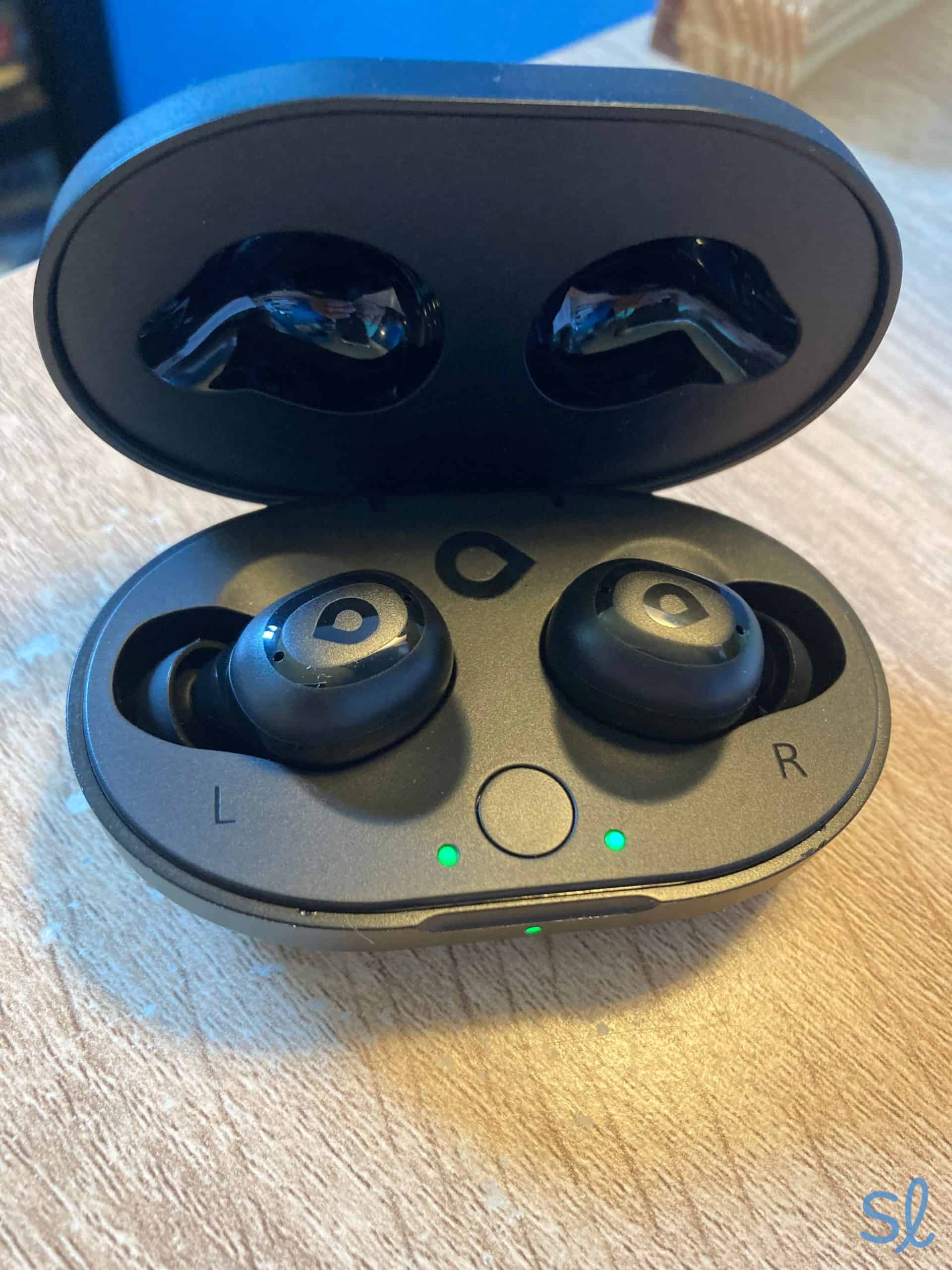
Testing out LINK by Eargo, the company's earbud-style hearing aids.
Exercise Location
Outdoors
Although most hearing aids offer some level of wind cancellation, certain styles pick up wind noises more than others (i.e., ITE hearing aids). If you enjoy running or playing other sports outdoors, consider a different style. Prioritize models with advanced wind cancellation features.
Indoors
Any style of hearing aid is compatible with indoor exercise. Focus more on the type of exercise you do indoors when making your hearing aid selection.
More Hearing Aid Resources for Active Seniors
If you’re looking for a certain type of hearing aid or just want to compare all the options, check out our resources below. We’ve tested, compared, and ranked hearing aids for a variety of different needs:
- Best Android-compatible hearing aids
- Best Bluetooth hearing aids
- Best behind-the-ear hearing aids
- Best hearing aids for severe hearing loss
- Best hearing aids for those with Alzheimer’s disease
- Best hearing aids for tinnitus
- Best invisible hearing aids
- Best hearing aids for one-sided hearing loss
- Best Made-for-iPhone hearing aids
- Best rechargeable hearing aids
Also, watch our video below with another audiologist on our panel of experts, Dr. Brad Ingrao. He discusses how to choose the right hearing aid for you with SeniorLiving.org Editor-in-Chief Jeff Hoyt.

Frequently Asked Questions About Hearing Aids for an Active Lifestyle
-
Can you play sports with hearing aids?
Yes, you can play sports while wearing hearing aids. You may just need to take some precautions, such as wearing a headband, using a sweat-resistant hearing aid pouch, or attaching your hearing aids to your clothes with a clip in case they fall out.
-
How do you stop hearing aids from sweating?
Sweat can damage your hearing aids if you don’t take steps to combat it. You can prevent sweat from entering BTE hearing aids by using hearing aid sweat socks or Teflon tape.2 Placing your hearing aids in a dry box or dehumidifier overnight can remove moisture from your hearing aids, too.
-
Can I wear a helmet with hearing aids?
Yes, you can wear a helmet with hearing aids. Styles that sit in your ear, such as CIC or ITC, are more comfortable with a helmet. You also won’t risk pulling your hearing aids off your ears when removing your helmet. It can be a problem when you wear a helmet with BTE or RIC hearing aids.
-
Can you wear hearing aids in the water?
Certain styles and brands of hearing aids are more resistant to water than others, making them a better option for water activities like fishing or boating. However, you should generally not wear your hearing aids if your head will be submerged under water.
Centers for Disease Control and Prevention. (2023). Older Adult Activity: An Overview
National Institute on Aging. (2021) 3 studies link hearing loss with less physical activity among older adults
The Healing Journal. (2001) Keeping Hearing Aids Dry



